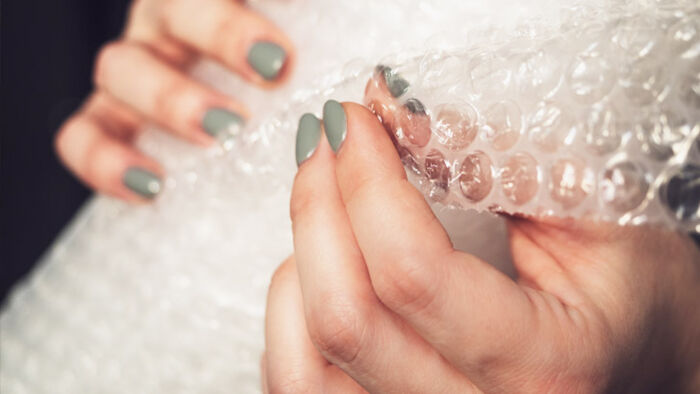Why bubble wrap is the secret to keeping your house warm
By Serina Bird
I love the crisp days of winter, with long walks to glimpse the snow on top of the ranges. But I don't love feeling cold - especially when I'm working at home.
And it's important to feel warm at home, not just because it is cozy, but because cold homes are bad for your health. Often, people living in poverty - or wanting to save money - avoid turning on the heater to save money.
According to the WHO's housing and health guidelines, 18 degrees Celsius is the minimum recommended temperature for heating homes. Below that contributes to poor respiratory and cardiovascular outcomes.
Older people and those with weakened immune systems are especially vulnerable if their homes are not adequately heated.
So what can you do to save money while still heating your home? Here are some of my tips for staying warm on a budget.
1. Electric rugs
Electric rugs are similar to electric blankets, but they are more versatile. Rugs do not have to just go under your sheets. Instead, they are portable blankets that can be used on your bed or elsewhere in your home.
I like to drape mine over me when I am at my desk and working from home or share it when we are watching television as a family. Using this rug reduces the need to turn on the main heater for several hours each day.
What makes electric rugs such a great option for home heating is their energy efficiency. Mine uses between 20 to 100 watts of electricity depending on the setting, and costs less than 5 cents per hour to run. In comparison, a fan heater costs between 30c and 70c an hour.
Cost saving: 5 cents an hour compared with up to 70 cents an hour for a fan heater.
2. Bubble wrap it
While the cost of double glazing is coming down, it's not yet affordable for everyone. And if you are renting, double glazing might not be possible.
A cheap and effective alternative is to use bubble wrap. The air pockets in the bubble wrap create the same effect as double glazing, but without the cost.
A bonus is you could recycle packing materials and potentially install this for free (put a shoutout on your local Buy Nothing group if you don't have supplies).
To install, spray your window with water (or window cleaner), and simply press the bubble wrap on top. Peel the bubble wrap off when you no longer require it.
Cost saving: Up to $20 for a large roll - or free if you ask around.
3. Hot stuff
A nice, hot beverage - be it a cuppa or a hot chocolate - is a perfect way to keep warm in winter - especially if you are working at home.
According to the UK Centre for Sustainable Energy, having regular hot drinks and eating regularly is important to keep energy levels up over winter. But the cost of constantly boiling your kettle can add up. It costs more to fill up an entire electric kettle full of water and uses more energy.
How much? It costs around 3 cents to heat a kettle of water to the maximum, but only 1 cent to heat it to the minimum. And if you have leftover hot water, you can save money by pouring it in a thermos to use later.
Maybe saving around 10 cents a day doesn't seem like much, but over the course of a year you could save $36.50, which is better than nothing for someone on a low income.
Cost saving: 1 cent each time you turn on the kettle compared with 3 cents. Around $36.50 a year.
4. Low-cost cooking
Keeping warm isn't just about turning the heater on; it's also about cooking.
Try to avoid using an oven if possible, as it requires energy to heat. If you are cooking in your oven, aim to bake more than one item to utilise the energy effectively - and then leave the oven door open so that the heat can help heat up the house.
Where possible, use your slow cooker or pressure cooker to make delicious meals in winter. A slow cooker costs around 5 cents an hour to run, compared with 51 cents for a large oven. A pressure cooker costs more per hour to use at 17 cents, but meals are cooked faster.
Cost saving: 40c to cook a roast in a slow cooker compared with $1.02
5. Curtains
Curtains aren't just a tool for interior designers - they can be one of the most effective - and cheapest - insulation tools in your home.
According to Sustainability Victoria, one single pane of glass can lose 10 times the amount of energy as the same area of insulated wall.
Don't let your energy get sucked out of your home. Instead, choose thick curtains, preferably ones with thermal lining, and design them so that they have a pelmet on top.
The pelmet will help prevent warm air from being sucked over the top of the curtain towards the cool of the window. Allow the sunlight to come in during the day, especially if you have a north-facing aspect. And as soon as the sun goes down, draw the curtains.
Cost saving: Depends on the size of windows and the cost of curtains. But in general, up to 40% of a home's energy can be lost through windows.
Get stories like this in our newsletters.



